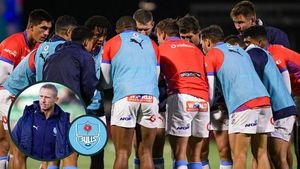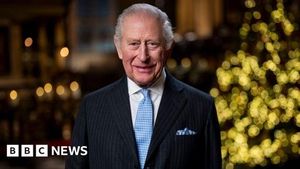The legal battle over the indictment of former FBI Director James Comey has erupted into a high-stakes procedural showdown, exposing unusual missteps and accusations of political motivation that have left the case teetering on the edge of collapse. What began as a routine hearing in Alexandria, Virginia on November 19, 2025, quickly spiraled into a public spectacle, with revelations that the full grand jury never saw the final version of the charges against Comey. This admission by Lindsey Halligan, the interim US attorney who led the prosecution, has raised serious questions about the legitimacy of the indictment and the future of the case.
The hearing, presided over by Judge Nachmanoff, was initially convened to consider Comey’s request for access to grand jury materials. Comey’s defense, led by Michael Dreeben, argued that Halligan acted as a "puppet" for President Trump and had “botched” the grand jury process. According to The Washington Post, Dreeben insisted that the indictment should be dismissed because it was not properly secured before the five-year statute of limitations expired on September 30, 2025. The charges against Comey stem from his September 30, 2020 testimony to the Senate Judiciary Committee, in which he denied authorizing leaks to the press about high-profile FBI investigations.
On September 25, 2025, Halligan and a team that included FBI agents and attorneys spent the morning preparing the indictment. According to CNN, the team participated in several “practice runs” and reviewed exhibits, carefully omitting certain text messages flagged by the FBI Office of General Counsel as potentially privileged. Special Agent Spenser Warren advised that any communications referencing future legal representation should be excluded, a decision that was followed by the team as they finalized the evidence to be presented to the grand jury.
Yet, the grand jury process itself quickly became mired in confusion. As described in filings and recounted by Politico, Halligan experienced technical difficulties with the ELMO audio-visual system during her presentation, prompting grand jurors and staff to assist. Only one witness, Agent Miles Starr, testified before the grand jury in support of the indictment. After the presentation concluded around 4:28 p.m., the grand jury deliberated for approximately two hours. In the end, they rejected Count One, which related to an alleged “Clinton Plan” lie, but approved Counts Two and Three, which accused Comey of authorizing anonymous sources for news stories and obstructing a congressional investigation with false and misleading answers.
However, the paperwork that followed only deepened the confusion. Magistrate Judge Lindsey Vaala was handed two conflicting documents: one indicating the grand jury had rejected the entire indictment, and another showing approval of two charges. When questioned, Halligan disavowed knowledge of the no-billed indictment, stating, “I only reviewed the one with the two counts that our office redrafted when we found out about the two — two counts that were true billed, and I signed that one. I did not see the other one. I don’t know where that came from.” The grand jury foreperson was ultimately asked to annotate the record, clarifying that only Count One had been rejected. Yet, the lack of a court reporter during key moments, and questions about who signed which documents, have left the record muddled and open to challenge.
These procedural irregularities are not trivial. As former federal prosecutor Neama Rahmani explained to The New York Times, “If the grand jurors didn’t see the correct indictment and they left the jury room, you can’t assign your voting rights to a proxy. That’s not how it works. They all have to be present, they all have to review the indictment and they all have to agree there is probable cause.” Rahmani called the situation “amateur hour” and noted that with the statute of limitations now lapsed, the government may have no opportunity to correct the error.
The defense has seized on these missteps, arguing that the prosecution is not only procedurally flawed but also politically motivated. Dreeben pointed to a memo from Halligan’s predecessor, Erik Siebert, declining to charge Comey, and cited former President Trump’s September 20, 2025, post on Truth Social declaring Comey “guilty as hell” as evidence of retaliatory prosecution. “It is effectively an admission that this is a political prosecution,” Dreeben argued in court. “We have never before seen in this country a blatant use of criminal justice to achieve political ends. This has to stop.”
Prosecutors, however, have pushed back forcefully. Assistant US Attorney Gabriel Diaz insisted in a 25-page filing that the “procedure was proper,” and that the transcript of the grand jury proceedings was complete. Assistant US Attorney N. Tyler Lemons echoed this, stating, “Ms. Halligan was not directed to seek this prosecution. It was her decision and her decision only. Ms. Halligan was not a puppet. … She made independent decisions.” The government also produced an email from the grand jury court reporter confirming that no audio or testimony was missing from the record, and argued that the confusion arose from a simple administrative correction that removed the unapproved count from the indictment.
Despite these assurances, Magistrate Judge William Fitzpatrick found evidence of “a disturbing pattern of profound investigative missteps, missteps that … potentially undermine the integrity of the grand jury proceeding.” On November 17, 2025, he ordered Halligan’s office to turn over grand jury materials to Comey’s defense, a move the Department of Justice has since challenged as an overreach. The DOJ’s objection contended that the magistrate judge “clearly erred” and that the order was “contrary to law,” arguing that the judge’s analysis relied on out-of-context quotes and incomplete statements.
Adding another layer of complexity, both Comey and New York Attorney General Letitia James—who faces unrelated bank fraud charges—have argued that Halligan’s appointment as interim US attorney was itself unlawful, citing limits on temporary appointments. Both have pleaded not guilty and claim they are being targeted in retaliation for their criticism of the former president. Halligan’s office maintains that the Attorney General has the authority to extend temporary appointments if the Senate fails to confirm a nominee.
Judge Nachmanoff, who described the procedural issues as “weighty,” has not yet ruled on the defense’s motions. With Comey’s trial scheduled for January 5, 2026, the case remains in limbo, overshadowed by doubts about both the process and the motivations behind the prosecution. As the legal wrangling continues, the case stands as a stark reminder of the fragility of the justice system when politics and procedure collide.
With the statute of limitations expired and critical questions unanswered, the fate of the Comey prosecution hangs by a thread, leaving observers across the political spectrum watching closely to see whether the rule of law—or the rule of error—prevails.






